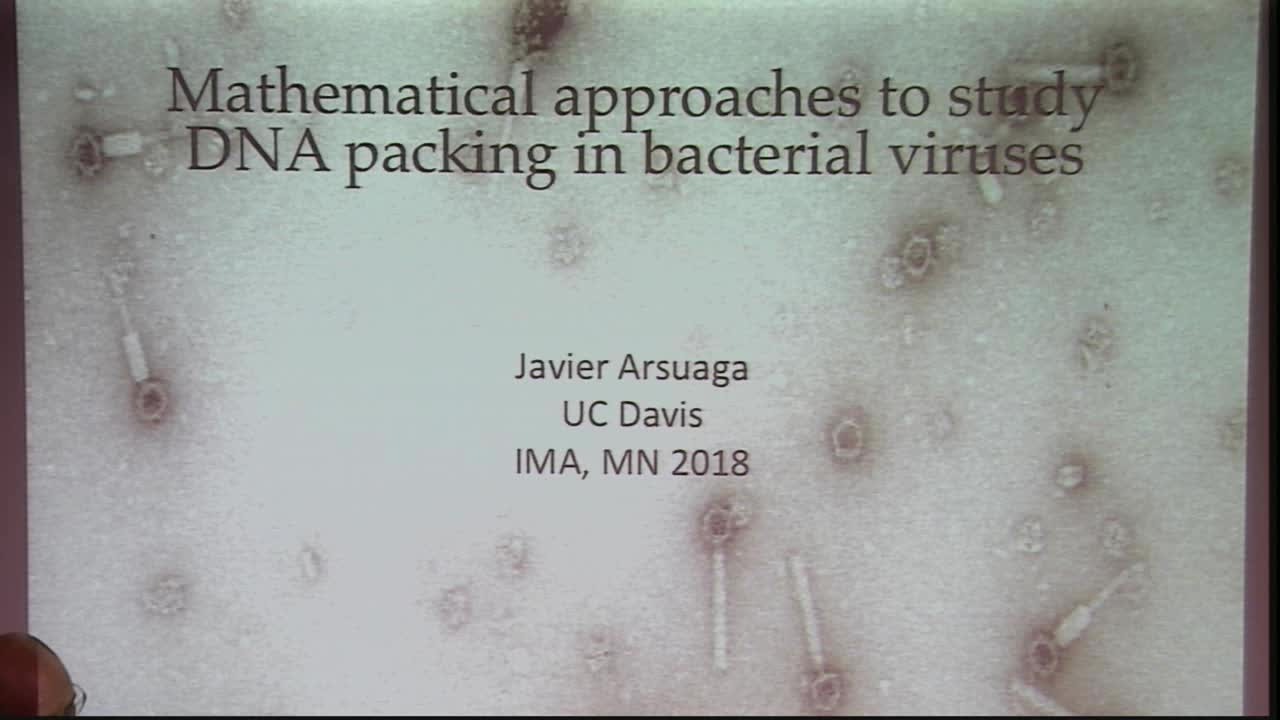Mathematical approaches to the problem of DNA organization inside bacterial viruses
Presenter
January 17, 2018
Keywords:
- Bacteriophage DNA packing, DNA Knots, chromonic liquid crystal
Abstract
The three dimensional organization of genomes is a key player in multiple biological processes including the packaging and release of viral genomes. The genome of some viruses, such as bacteriophages or human herpes, is a double stranded DNA (dsDNA) molecule that is stored inside a viral protein capsid at a concentration of 200 mg/ml-800mg/ml and an osmotic pressure of 70 atmospheres. The organization of the viral genome under these extreme physical conditions is believed to be liquid crystalline but remains to be properly understood. A general picture of this organization has been recently given by cryoelectron microscopy (cryoEM) studies that show a series of concentric layers near the surface of the viral capsid followed by a disordered arrangement of DNA fibers near the center of the capsid.
In this talk I will present results from three different mathematical approaches to study the problem of dsDNA packing in bacteriophages. The first approach complements the cryoEM observations and uses the formation of knots inside viral capsids as a probe for DNA packing. These results suggest that DNA knots are highly likely upon confinement and that the DNA molecule is chirally organized inside the viral capsid. The second approach aims at identifying the possible sources of the chiral organization of the genome and employs methods from random knotting and brownian dynamics. Our third approach uses continuum mechanics models to describe cryoEM observations as minima of a chromonic liquid crystalline phase. The emergent picture of these approaches suggest that DNA is in a chirally organized liquid crystalline phase in which knots may be the product of liquid crystal defects.
